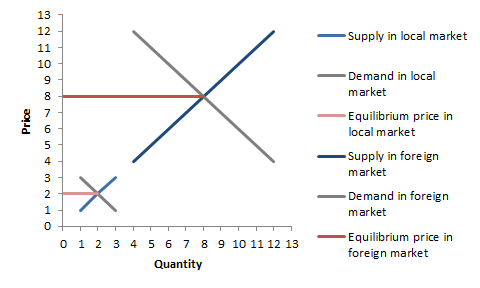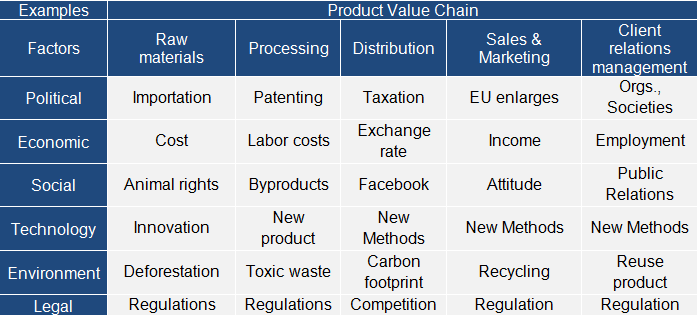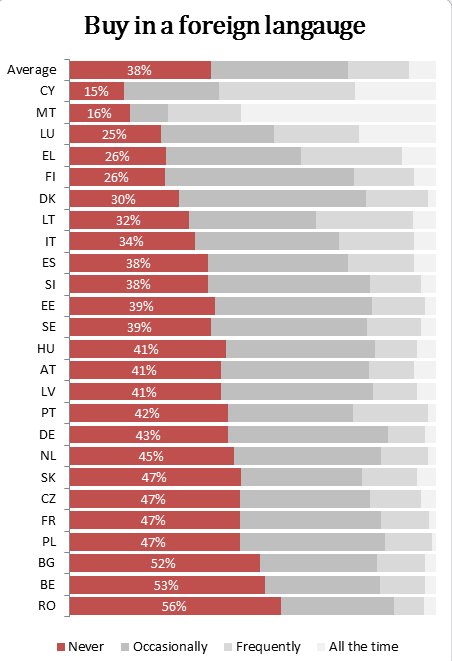Grow business by partnering with a language service provider (LSP)
On any given day, the economy of a single nation or across many nations fluctuates. Similarly, business growth also fluctuates and can become stagnant. To stabilize revenue streams and grow the business, many organizations diversify by taking their product(s) or services across international boundaries.
Depending on the industry, product(s) or services, as well as the company’s internal abilities, an organization may find it cost-effective to seek business growth beyond its home country. In this document we’ll cover the benefits you can gain by partnering with a language service provider (LSP). For the purpose of this article, all benefits will be described in terms of market share and costs.
Increase your market share
To gain market share you can increase the quantity of the product(s) or services sold and/or you can increase the price of the product(s) or services. Increasing quantity sold means selling your products or services to new customers – either those new to the market or those who previously bought from a competitor.
What it takes to sell to new customers
When you stay within your current target market, you can increase market share by selling to the same general target audience, but in a different language which immediately increases the number in your target audience. However, selling your products or services to the same general target audience, but in a new country can be more complex. The diagram below provides samples of what might be impacted when you introduce your offering to a new market.
For the purpose of this document, we’ve simplified products to being either physical or virtual.
-
Physical products
The examples above matter more or less depending on industry, product and the capabilities of the company. For example, in manufacturing, importation and regulation documents typically require translation before the company gains market authorization. To help you overcome hurdles such as this, some LSPs offer auxiliary services such as regulatory formatting like MSDS authoring.
-
Virtual products
When it comes to virtual products, software, apps and websites are excellent examples. And, when compared to physical products, the obstacles that surround most physical products are largely negated. This is primarily due to their comparative simplicity in design, e.g. no complex materials, machine tool or moving parts, as well as their distribution convenience, e.g. a simple download.
Increasing market share
At its most basic level, gaining market share revolves around customer-perceived benefits and price changes. In addition, perceived benefits can and should be articulated at both the product and company level. Let’s take a closer look at each of these.
At the product level, perceived benefits include translation of the product itself, for example a website, and related user experience components such as buttons, measurements, warning labels, etc. because it would expose the product to a much larger audience. For example, 18% in China, or 259 million people, buy online at Chinese websites only. In Japan, 24%, or about 43 million people, only buy from Japanese websites. To cost-effectively increase market share, the translation of product material should be a priority.
At the company level, perceived benefits generally include the organization’s reputation, any post-purchase and auxiliary support services, and consistency in product availability, quality and reliability. Using software as an example, one of the primary sources of perceived value is technical support. By promoting the high-quality technical support you provide, you’re able to leverage this unique selling point in any market.
To avoid introducing additional fixed costs or reducing your technical support team’s ability to efficiently process support tickets, an LSP can cost-effectively translate technical support tickets – enabling you to overcome language barriers.
Be sure to take a look at your competitors. If they already offer multilingual technical support, then you can improve your competitiveness by also offering this service. However, if your competitors have not yet introduced this service, you can use it to your advantage as a unique selling point and claim a first-mover advantage. When looking for an LSP, be sure that they have the technology and capacity required to translate support tickets, as this service is not typically offered within the translation industry.
Once you gain market share through customer-perceived benefits, you can maintain it through intellectual property protection submissions, if applicable. Typically, these documents must be translated and tend to be handled by a specialist law firm, who will in-turn forward the documents to a specialist LSP. We recommend that you request from the law firm to use an already preferred LSP, which will enable you to realize a volume discount.
Increase price point
Typically, increasing a product’s price point can be justified by increasing the customer-perceived benefit. Increasing the benefit of a product usually takes place in the research & development (R&D) stage of product development. For example, in the life sciences industry, academic publications are a major source of inspiration for creating and improving products such as drugs and medical devices. However, by one count, China publishes more scientific journal articles than any other country, with Malaysia and Saudia Arabia close behind, leaving roughly 1 in 3 articles being published from an English-speaking country. As developing countries strengthen their research capabilities, these statistics are likely to change more. In fact, the five countries producing the highest growth rates in publications are Indonesia, Malaysia, Saudi Arabia, Colombia and Iran.
When research isn’t published in English, the outcome is a lack of access to potentially critical information, putting native speaking research and development teams at a disadvantage. The same principle applies to auxiliary products and services offered by the company. Without the needed information in their primary language, enhanced product development may be stifled, having a negative effect on the product or service in new markets.
However, if your competition doesn’t yet offer higher customer-perceived benefits, both the translation of research material as well as the translation of support-related documents can still justify an increased price point. The role of an LSP is to provide access to R&D publications that originate in other languages, as well as allow support services to be delivered in new markets. Finally, translation of these highly academic and technical documents requires an LSP that specializes in these areas.
When entering a new market, a higher price point can also be justified when there is a high demand and low supply 
Regardless of whether or not management believes translation of research material leads to an enhanced product, or translation of product material justifies a higher price point, the company and product brand are enhanced by the perceived global presence.
Reduce costs
Costs can be classified in one of two ways – fixed or variable. Both types are included when calculating per product profit, but recognizing which are fixed and which are variable can help management target where to reduce costs.
- Fixed costs: The cost doesn’t change with the number of products produced. For example, employee salary or plant costs such as electricity, machinery, etc.
- Variable costs: Costs that are incurred when a product is produced.
Ideally, all business costs would be variable so that no costs are incurred unless a product was manufactured (and hopefully sold at a profit). Reducing the percent of costs that are fixed can put a company in the direction of profitability. The most common way to reduce unit fixed costs is by increasing the number of units sold, and since the byproduct of successfully expanding into new markets leads to an increase in units sold, the proportion of fixed costs per product declines.
Summary
In summary, strategic translation of documents creates opportunities to grow the business:
If you’d like to learn more about how BURG Translations helps you ensure high quality translations, contact us today.











